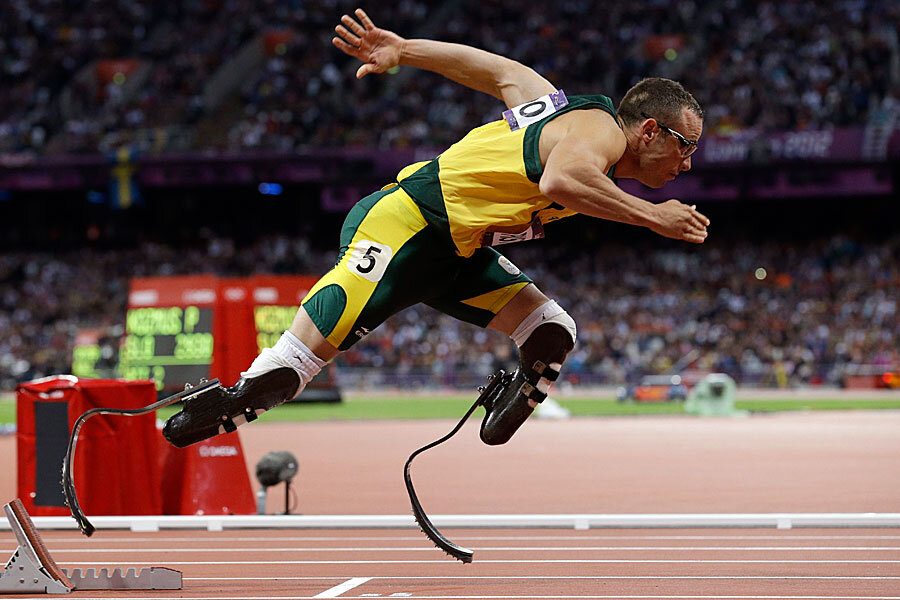How did Oscar Pistorius lose his legs?
Loading...
By all accounts, Oscar Pistorius never let his lack of legs slow him down.
Pistorius was born without fibulas (calf bones), and at 11 months old, his parents made the difficult choice to have both of his legs amputated below the knee, enabling him to be fitted with prosthetic legs. Within six months, he was walking.
The son of Henk and Sheila Pistorius, Oscar Pistorius was the middle child of three. He grew up in a middle class South African family, says Biography.com.
As a boy, Pistorius was always athletic and played on sports teams at school, including cricket, wrestling, and boxing. He also played rugby at Pretoria Boys High School, but at one point, injured his knee. As part of his rehab work after the injury, he began running track at age 16.
That choice set him on a path to become an Olympic sprinter known as the "Blade Runner" or as some media dubbed him: "the fastest man on Earth with no legs."
Six months after his rugby injury, Pistorius ran in his first competitive 100-meter race for Pretoria Boys High School. His time: 11.72 seconds, shattering the existing Paralympic world record of 12.20 seconds, according to Pistorius's own website.
About six months after that race, Pistorius was invited to the US offices of Össur, the company that manufactures Flex-Foot Cheetahs – a carbon-fiber, flexible limb designed for jumping and sprinting. In September of that year, while wearing a pair of Cheetahs, Pistorius won a gold medal in the 200-meter race and a bronze at the 100-meter race in the 2004 Athens Paralympics.
He soon began competing against runners with no prosthetic limbs – and that became a source of controversy.
In 2007, the International Association of Athletic Foundations banned Pistorius from competing, stating that his carbon-fiber Cheetahs gave him an unfair advantage. He fought the ruling and was eventually allowed to compete and qualified for the 400-meter race in the 2012 London Olympics. He was eliminated in the semi-finals of the race, but became the first amputee athlete to compete at the Olympics.
Now on trial in South Africa, charged with murdering his girlfriend, Pistorius's prosthetic limbs are likely to figure in the case.
Pistorius admits to shooting Reeva Steenkamp on Feb. 14, 2013, but he maintains he mistook the model and reality TV star for an intruder in his home and shot her in self-defense.
"If Pistorius' team can prove that he did not have his prosthetic legs on when he shot – and forensic experts may decipher that from the height of bullet holes in the door and the trajectory of the bullets – it will help his defense against the premeditated murder charge and hinder the prosecution, which initially insisted he fired after taking the time to put on his artificial limbs," according to the Associated Press.
Would Pistorius, a life-long user of prosthetic limbs, be more or less likely to put on his legs if he thought there was an intruder in the house?






